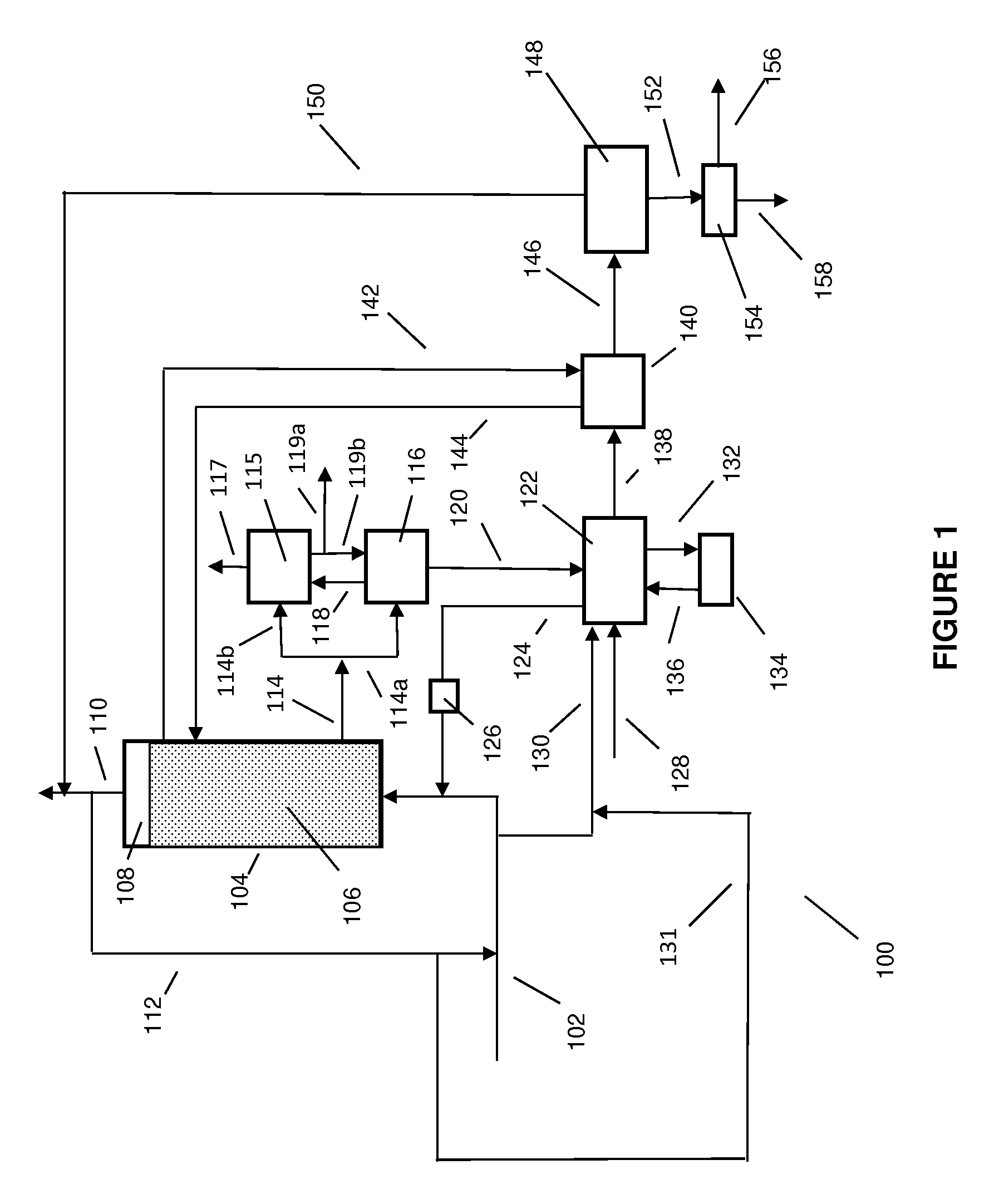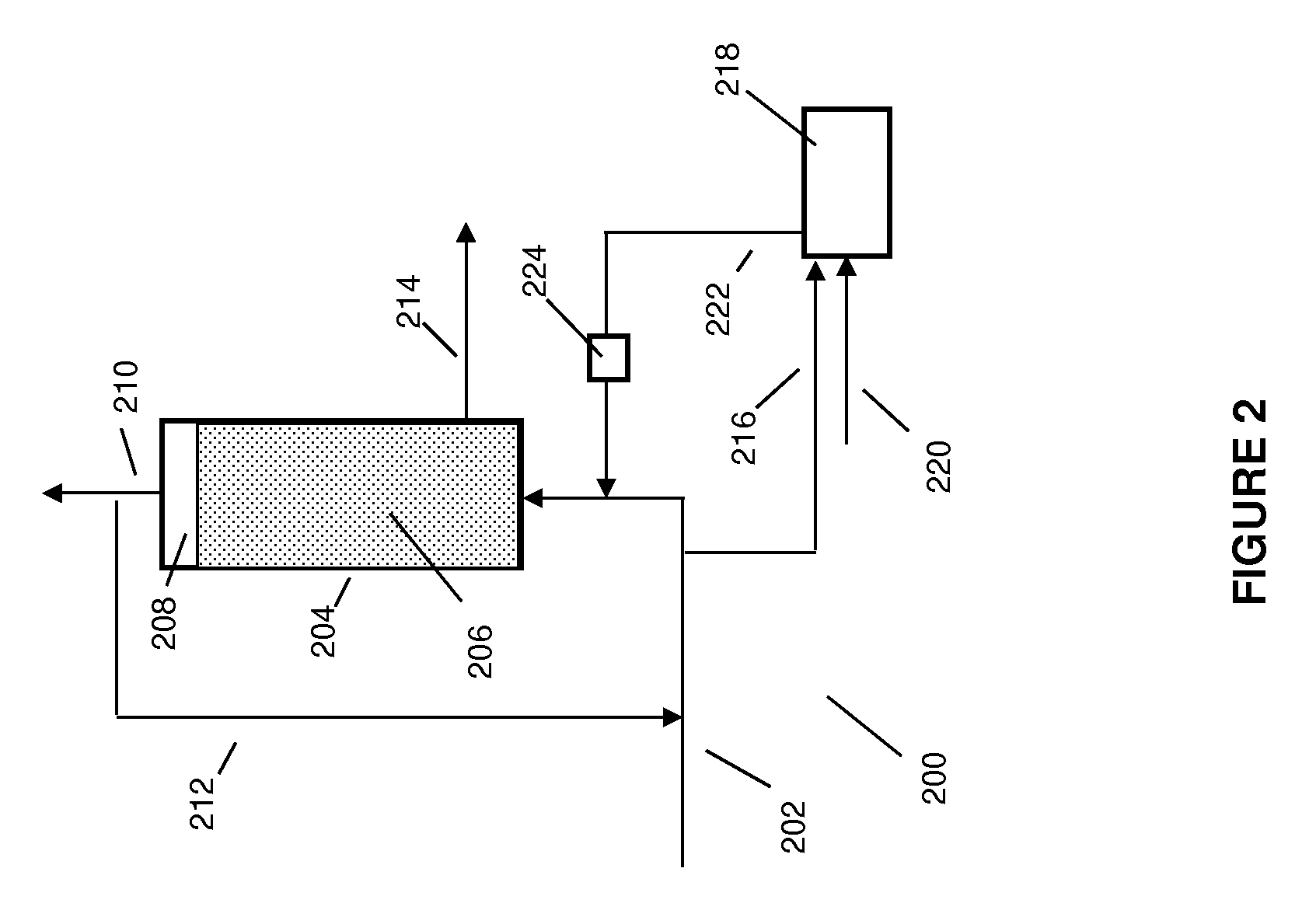Integrated processes for bioconverting syngas to oxygenated organic compound with sulfur supply
a bio-conversion process and oxygenated organic compound technology, applied in biofuels, climate sustainability, fermentation, etc., can solve the problems of reducing attractiveness, requiring special handling, and processes for the recovery necessarily incur capital and operating costs, so as to facilitate the recovery process and maintain the desired ph , the effect of reducing sulfur conten
- Summary
- Abstract
- Description
- Claims
- Application Information
AI Technical Summary
Benefits of technology
Problems solved by technology
Method used
Image
Examples
Embodiment Construction
[0030]As used herein, the term oxygenated organic compound means one or more organic compounds containing two to six carbon atoms selected from the group of aliphatic carboxylic acids and salts, alkanols and alkoxide salts, and aldehydes. Often oxygenated organic compound is a mixture of organic compounds produced by the microorganisms contained in the aqueous menstruum. Preferred oxygenated organic compounds are ethanol, n-propanol, i-propanol, n-butanol, i-butanol and acetone.
[0031]Also, the term syngas is a gas containing carbon monoxide and frequently hydrogen, although term “syngas”, for purposes herein, is also intended to encompass carbon monoxide gas streams that may have little or no hydrogen. Typically, carbon monoxide is present in an amount of at least about 20 volume percent, and the syngas typically contains other components in addition to hydrogen such as carbon dioxide, nitrogen and water vapor. Syngas may derived from various sources, including, but not limited to, ...
PUM
| Property | Measurement | Unit |
|---|---|---|
| volume percent | aaaaa | aaaaa |
| volume percent | aaaaa | aaaaa |
| temperature | aaaaa | aaaaa |
Abstract
Description
Claims
Application Information
 Login to View More
Login to View More - R&D
- Intellectual Property
- Life Sciences
- Materials
- Tech Scout
- Unparalleled Data Quality
- Higher Quality Content
- 60% Fewer Hallucinations
Browse by: Latest US Patents, China's latest patents, Technical Efficacy Thesaurus, Application Domain, Technology Topic, Popular Technical Reports.
© 2025 PatSnap. All rights reserved.Legal|Privacy policy|Modern Slavery Act Transparency Statement|Sitemap|About US| Contact US: help@patsnap.com


